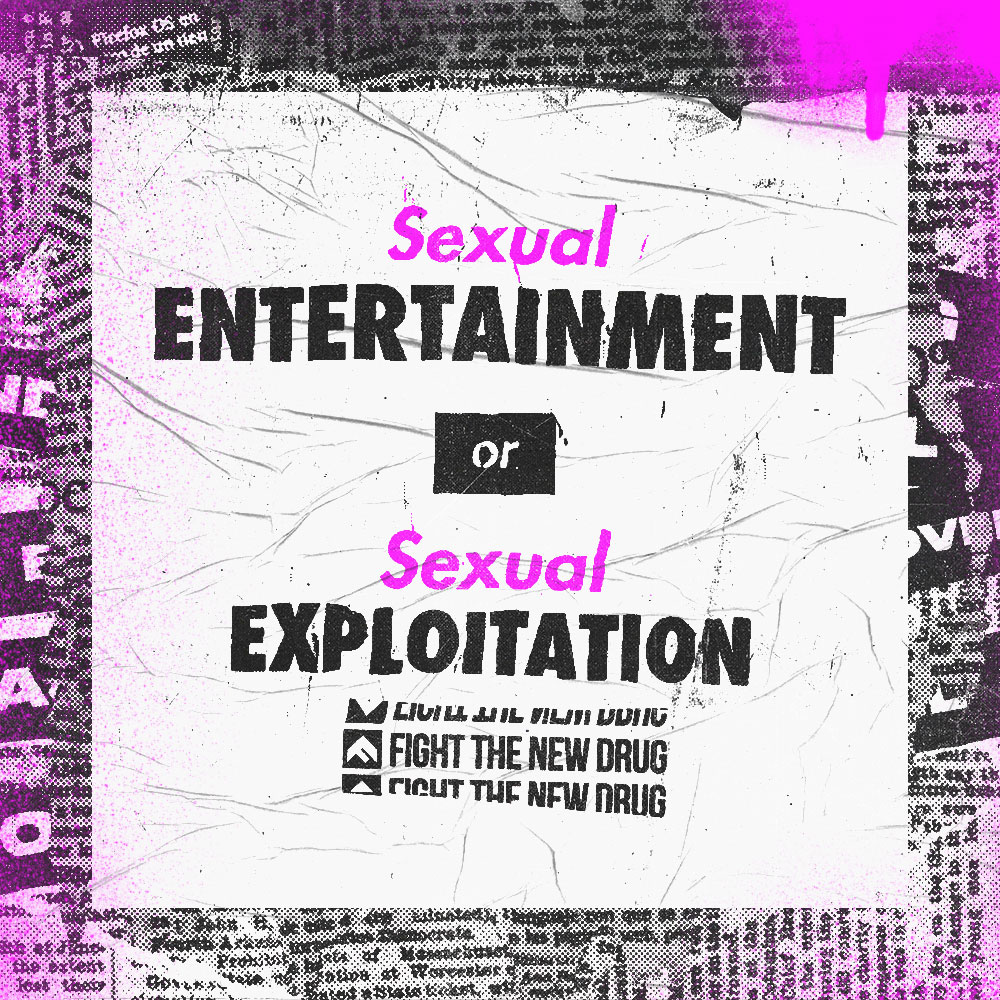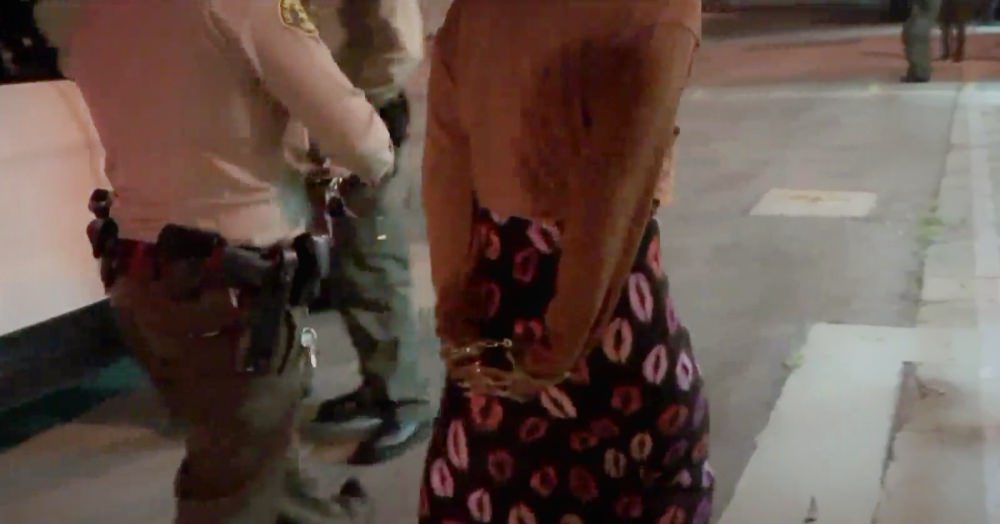Cover image from KTLA’s report on the sting by Marissa Wenzke and Kareen Wynter.
According to local reports, fourteen minors were among the nearly 50 victims of human trafficking rescued during a sting across California that netted 339 arrests, law enforcement officials said Tuesday.
Some of the victims found by law enforcement were as young as 13 while other cases involved children as young as 6, Los Angeles County sheriff’s officials said during a news conference alongside other authorities. Ninety-three human trafficking task forces and teams from various counties were part of the 3-day operation.
Among those arrested during “Operation Reclaim and Rebuild” were pimps who had put victims up for sale and individuals soliciting sex from underage teens, sheriff’s officials said. Some of those saved from the underground world of sex trafficking were runaways or victims found through social media and chat sites online.
Officials said various tools are used in tracking down victims and suspects in the statewide sex trade, including bots who send texts to those soliciting sex.
Click here to read KTLA’s full coverage of the trafficking sting.
Sex trafficking and porn
You might be asking, why is an anti-porn, pro-love organization talking about sex trafficking? We’re glad you asked.
In 2000, in response to reports of international human trafficking, one of the broadest U.S. bipartisan coalitions in history came together to pass the Trafficking Victims Protection Act, or TVPA. [1] The landmark legislation identified “severe forms” of human trafficking, imposed harsh criminal penalties for offenders, and provided support systems for the victims. [2]
Related: By The Numbers: Is The Porn Industry Connected To Sex Trafficking?
Why was that such a big deal?
The TVPA defines sex trafficking as a situation in which “a commercial sex act is induced by force, fraud, or coercion, or in which the person induced to perform such acts has not attained 18 years of age.” [3] It was designed in response to international sex trafficking like what we see in movies like “Taken,” but it had an interesting result: it ended up shining a light on every form of sex trafficking, especially in the United States—including when it happens in the porn industry.
But how can porn performers be sex trafficked? As survivors and data show, some people have been forced, tricked, or coerced into entering the industry in the first place, unable to leave once they’ve started. Not only that, but performers who are already in the industry can be forced, tricked, or coerced into performing sex acts they’re uncomfortable with, or performing with other performers on their “no” list. This is also considered a form of sex trafficking under the TVPA.
Related: What Happens To Sex Trafficking Survivors After They’re Rescued?
Consider this quote from one former performer:
“I tried backing out and wanted to go home, not do porn at all. I was threatened that if I did not do the scene I was going to get sued for lots of money.” –Former porn performer, Michelle Avanti
The worst part? Sex trafficking and other forms of exploitation blend right in with what’s mainstream, normalized, and celebrated in our sex-obsessed society.
How porn fuels the demand for exploitation
This means porn performers can be victims, and not necessarily realize what they just encountered. The best evidence of the trafficking and other abuses going on in the industry are from performers themselves. Their firsthand experiences speak louder than numbers (though we have those too).
Pornography fuels the global sex trade by driving demand into the mainstream of society. And since porn consumers do not and cannot distinguish between trafficked individuals and porn performers, they can often reinforce and drive the demand for exploitation through clicks and downloads without realizing it.
Or it can be a more direct reinforcement, like porn-obsessed consumers actually purchasing sex from trafficked individuals.
In fact, some evidence suggests that this desensitization toward sexual violence through the consumption of porn can then manifest in more willingness to buy sex. And when more people are buying sex, that increases the demand for individuals being trafficked for sex. [4]
Researchers of porn addicts have noted that an increasing tendency to act out sexually the behaviors consumed in the pornography includes frequenting massage parlors. In other words, the consumers looking at porn at home are often the same ones exploiting real people, ready with porn images in hand to show the person they’re exploiting what they want to do.
This is why we raise awareness on the connection between porn and sexual exploitation.

Citations
[1] Trafficking Victims Protection Act (TVPA) Of 2000, Pub. L. No. 106–386, Section 102(A), 114 Stat. 1464.
[2] Trafficking Victims Protection Act. (2009, November 29). Retrieved From Https://Fightslaverynow.Org/Why-Fight-There-Are-27-Million-Reasons/The-Law-And-Trafficking/Trafficking-Victims-Protection-Act/Trafficking-Victims-Protection-Act/
[3] Trafficking Victims Protection Act (TVPA) Of 2000, Pub. L. No. 106–386, Section 102(A), 114 Stat. 1464.
[4] Who buys sex? understanding and disrupting illicit market demand. (2018). Demand Abolition. Retrieved from https://www.demandabolition.org/wp-content/uploads/2019/07/Demand-Buyer-Report-July-2019.pdf; Herrington, R. L., & McEachern, P. (2018). “Breaking her spirit” through objectification, fragmentation, and consumption: A conceptual framework for understanding domestic sex trafficking. J.Aggression Maltreat.Trauma, 27(6), 598-611. doi:10.1080/10926771.2017.1420723
Your Support Matters Now More Than Ever
Most kids today are exposed to porn by the age of 12. By the time they’re teenagers, 75% of boys and 70% of girls have already viewed itRobb, M.B., & Mann, S. (2023). Teens and pornography. San Francisco, CA: Common Sense.Copy —often before they’ve had a single healthy conversation about it.
Even more concerning: over half of boys and nearly 40% of girls believe porn is a realistic depiction of sexMartellozzo, E., Monaghan, A., Adler, J. R., Davidson, J., Leyva, R., & Horvath, M. A. H. (2016). “I wasn’t sure it was normal to watch it”: A quantitative and qualitative examination of the impact of online pornography on the values, attitudes, beliefs and behaviours of children and young people. Middlesex University, NSPCC, & Office of the Children’s Commissioner.Copy . And among teens who have seen porn, more than 79% of teens use it to learn how to have sexRobb, M.B., & Mann, S. (2023). Teens and pornography. San Francisco, CA: Common Sense.Copy . That means millions of young people are getting sex ed from violent, degrading content, which becomes their baseline understanding of intimacy. Out of the most popular porn, 33%-88% of videos contain physical aggression and nonconsensual violence-related themesFritz, N., Malic, V., Paul, B., & Zhou, Y. (2020). A descriptive analysis of the types, targets, and relative frequency of aggression in mainstream pornography. Archives of Sexual Behavior, 49(8), 3041-3053. doi:10.1007/s10508-020-01773-0Copy Bridges et al., 2010, “Aggression and Sexual Behavior in Best-Selling Pornography Videos: A Content Analysis,” Violence Against Women.Copy .
From increasing rates of loneliness, depression, and self-doubt, to distorted views of sex, reduced relationship satisfaction, and riskier sexual behavior among teens, porn is impacting individuals, relationships, and society worldwideFight the New Drug. (2024, May). Get the Facts (Series of web articles). Fight the New Drug.Copy .
This is why Fight the New Drug exists—but we can’t do it without you.
Your donation directly fuels the creation of new educational resources, including our awareness-raising videos, podcasts, research-driven articles, engaging school presentations, and digital tools that reach youth where they are: online and in school. It equips individuals, parents, educators, and youth with trustworthy resources to start the conversation.
Will you join us? We’re grateful for whatever you can give—but a recurring donation makes the biggest difference. Every dollar directly supports our vital work, and every individual we reach decreases sexual exploitation. Let’s fight for real love:

